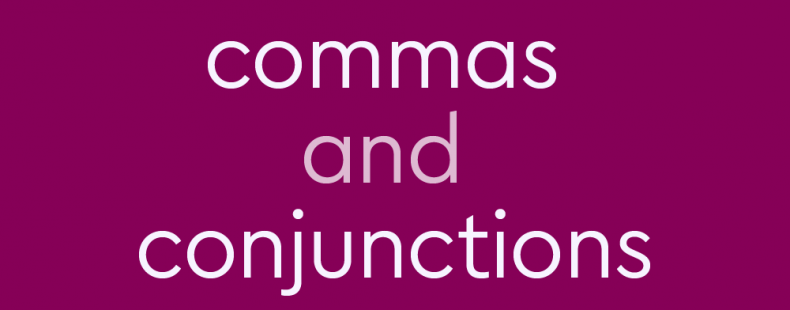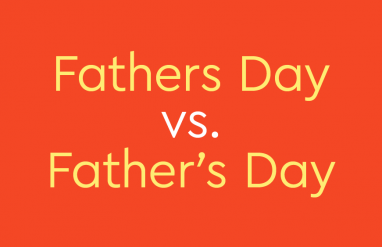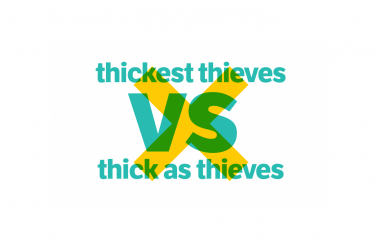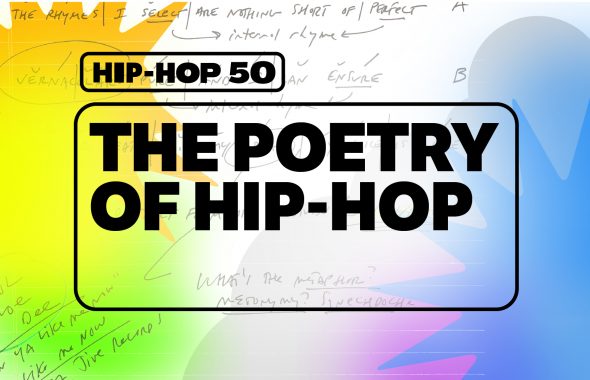Conjunctions are common and very useful parts of speech. The comma is a common, useful, and often confusing punctuation mark. So it should come as no surprise that these two grammatical chums often find themselves working together. But the comma—as it is often wont to do—has to make things difficult and only associate itself with some conjunctions some of the time. That darn comma seems to love to cause trouble, but this conjunction/comma conundrum isn’t nearly as confounding as it might seem.

What are conjunctions?
A conjunction is a word that we use to connect words, phrases, clauses, or sentences together. For example, the word and is a conjunction in the sentence I have a brother and a sister. Similarly, the word because is a conjunction in the sentence I love kittens because they are so cute. Conjunctions are very useful parts of speech because they allow us to make complex sentences (like this one).
Although we usually think of conjunctions as single words, the term conjunction is also used to refer to phrases that act the same as single-word conjunctions. For example, the phrases even though and as if can act like conjunctions in a sentence.
Conjunctions are very important, and we’ve merely scratched the surface of what they can do. If you’d like to know more about conjunctions, check out our great guide to conjunctions.
⚡️List of conjunctions
Refer to this list for some of the most commonly used conjunctions.
- for
- and
- nor
- but
- or
- yet
- so
- as
- because
- if
- than
- after
- before
- until
- unless
Comma before or after but?
The word but is one of seven words that are referred to as coordinating conjunctions. We have a great guide to coordinating conjunctions, but the short version is that a coordinating conjunction is used to link two identical grammatical elements (i.e. nouns and nouns, verbs and verbs, etc). One key rule of grammar is that coordinating conjunctions that link independent clauses must have a comma before them. If a coordinating conjunction is linking anything else, it doesn’t need a comma.
It is possible that you may need a comma after the word but in one particular situation. If the word but is immediately followed by an interrupting phrase, such as an aside or an idiom, it would have a comma after it. This situation is not exclusive to the word but, though, as it is possible for interrupting phrases (and their commas) to come after nearly any word in a sentence.
Examples
Let’s look at examples of using commas with the word but.
✅ Correct: I like candy, but I am allergic to chocolate.
❌ Incorrect: I like candy but I am allergic to chocolate.
In this sentence, but is linking two independent clauses. Both “I like candy” and “I am allergic to chocolate” are independent sentences that can stand alone. This means that but must have a comma in front of it.
✅ Correct: I ate every donut but one.
❌ Incorrect: I ate every donut, but one.
In this sentence but is not linking independent clauses. “One” is clearly not an independent clause. This means that we don’t need a comma before the word but.
✅ Correct: The store was closed. But, if I remember right, I saw Jake inside.
❌ Incorrect: The store was closed. But if I remember right I saw Jake inside.
The above example has an interrupting phrase come immediately after the word but, so we need to separate the but from the interruption with a comma.
Comma before or after and?
And is another of the seven coordinating conjunctions. The same rules that applied to the word but will apply to and: if it is linking independent clauses, it needs a comma before it. If not, it doesn’t.
An additional thing to keep in mind about and is that it is often used in lists. Items in lists are separated by commas and the word and typically comes before the last item on a list. This comma before and is known as the Oxford comma. The Oxford comma is often a source of intense grammatical debate, and some style guides may state the Oxford comma is optional. We have done a detailed exploration of the Oxford comma, but the short version is—as always—to consult your style guide. As a bonus tip, the Oxford comma is also used with the conjunction or, so you might also see this controversial comma absent present with a list that uses or rather than and.
Examples
Here are examples of the conjunction and used with and without commas.
✅ Correct: The snow fell, and the wind blew. (two independent clauses)
❌ Incorrect: The snow fell and the wind blew.
✅ Correct: I made macaroni and cheese. (only one independent clause)
❌ Incorrect: I made macaroni, and cheese.
The Oxford comma: Birds, squirrels, and bees lived in the tree.
Learn about another type of conjunction: the correlative conjunction.
Comma before or after so?
So is yet another member of the coordinating conjunction club. Once again, the word so must have a comma before it if it is being used to connect independent sentences. If it is linking anything else, it doesn’t need a comma.
When beginning a sentence with so (or any other conjunction), most grammar resources state that you don’t need to put a comma after so. However, if so is followed by an interrupting phrase, it would be followed by one of the two commas used to set the phrase apart from the main sentence.
Examples
Let’s look at different ways we use commas with the conjunction so.
✅ Correct: My sister was sick, so I made her chicken soup. (coordinating conjunction)
❌ Incorrect: My sister was sick so I made her chicken soup.
✅ Correct: You shouldn’t walk so fast. (adverb; not a conjunction at all)
❌ Incorrect: You shouldn’t walk, so fast.
✅ Correct: Sara was tired of walking to work. So she bought a bicycle. (begins a sentence, no comma)
✅ Correct: Tomorrow is a bank holiday. So, needless to say, I’ll have to wait to make a withdrawal. (interrupting phrase)
When to use commas before conjunctions
Commas are always tricky, but there are a few rules you can remember to help you not forget to include a comma when you need one.
1. Always use a comma before a coordinating conjunction
The seven coordinating conjunctions are for, and, nor, but, or, yet, and so. It helps to remember them as the FANBOYS. If any of these seven words are connecting independent clauses, they must have a comma before them.
Example
✅ Correct: My new novel is good, yet it could be better. (two independent clauses)
❌ Incorrect: My new novel is good yet it could be better.
2. Use a comma before and and or in a list (unless you are told not to)
Example
✅ Correct: I know that Todd, Erica, or Vince ate the last slice of pizza.
May be considered incorrect: I know that Todd, Erica or Vince ate the last slice of pizza.
3. Use a comma before conjunctions that begin interrupting phrases
Interrupting phrases are typically separated out from a sentence with commas. If one of these phrases begins with a conjunction, it will need to begin with a comma.
Example
✅ Correct: The apartment allows pets. But, and this is a big “but,” wild animals are not considered pets.
❌ Incorrect: The apartment allows pets. But and this is a big “but” wild animals are not considered pets.
When not to use commas before conjunctions
Conjunctions don’t always use commas. Here are a few instances where a conjunction won’t use a comma.
1. Subordinating conjunctions do not require commas
A subordinating conjunction is a conjunction that connects an independent clause with a dependent clause. A subordinate clause cannot stand by itself, and unlike coordinating conjunctions, subordinating junctions do not follow commas. Subordinating conjunctions can be tough to understand and are probably a major reason for the confusion surrounding commas and conjunctions. If you need help understanding subordinating conjunctions, we have a great guide to them.
Example
✅ Correct: We stayed inside because it was raining.
❌ Incorrect: We stayed inside, because it was raining.
2. Coordinating conjunctions do not always link independent clauses
The words for, and, nor, but, or, yet, and so are the seven coordinating conjunctions. However, coordinating conjunctions don’t use commas all of the time. If a coordinating conjunction is connecting something besides independent clauses, it doesn’t need a comma.
Example
✅ Correct: Carrie and I like to watch scary movies together. (two nouns connected)
❌ Incorrect: Carrie, and I like to watch scary movies together.
Now you’re ready to ace this quiz on commas and conjunctions!
Punctuate perfectly with Grammar Coach™
Confused about punctuation and its proper use? The Thesaurus.com Grammar Coach™ platform makes writing papers, essays, emails, and a whole lot more a whole lot easier. This writing tool uses machine-learning technology uniquely designed to catch grammar as well as spelling errors. Its Synonym Swap will find the best nouns, adjectives, and more to help say what you really mean, guiding you toward clearer, stronger, writing.













